Eric Kunsman
Member Spotlight - November 2019

- Where did you grow up, and where do you live now?
I grew up in Bethlehem, PA, which had a large influence on why I became a photographer as I grew up in the era of the steel mills closing. I attended Mercer County Community College (MCCC) in NJ and studied under Lou Draper. Under Lou’s guidance I transferred to the Rochester Institute of Technology. and lived in Rochester from 1997 to 2002 while studying at RIT and starting my teaching career. After Lou Draper passed away, I moved back to NJ to coordinate the photography program at MCCC from 2002 to 2005. At that point I moved back to Rochester, NY and founded my business, Booksmart Studio, while continuing to teach at RIT.
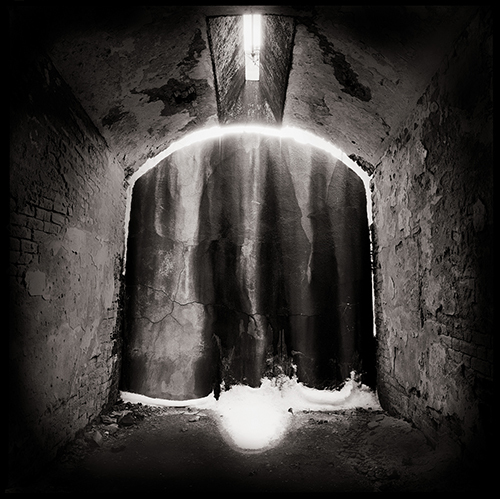
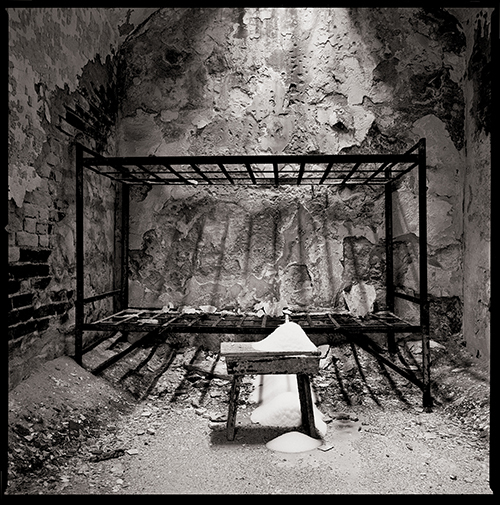
- Why did you join TPS, and how long have you been involved? I just recently joined TPS in 2019 and was awarded an honorable mention in the members exhibition. I joined TPS because many photographers that I admire and respect have been exhibiting at TPS for years. A few of these photographers mentioned how they enjoy the community and experience provided by being a TPS member.

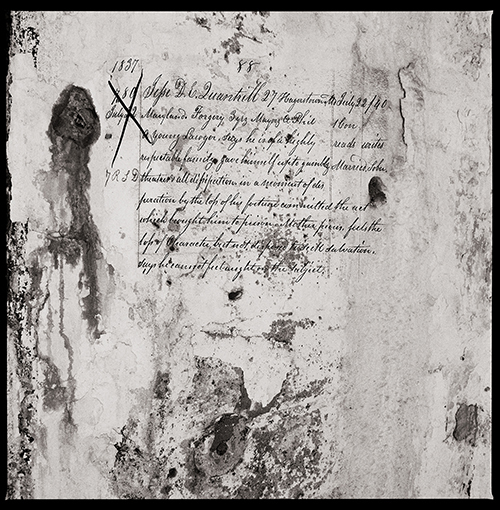
- Why did you become a photographer, and where do you find inspiration or motivation for your work?
As a young child I was always interested in all forms of art and just knew between my middle and high school years that I wanted to be a Creative. While in high school, Bethlehem Steel was slowly closing and many photojournalists descended on my hometown. It was one day in my high school photography class that my teacher Mr. King showed us the work of Walker Evans and the images he took of the Lehigh Valley including Bethlehem. It was at that point I realized how photography can be used to shape and document history. I was hooked!
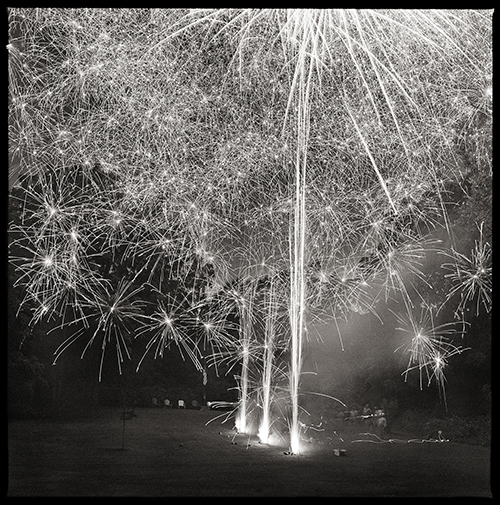

My inspiration is truly project dependent as each project has been motivated by certain life influences or environmental/societal circumstances. Growing up in Bethlehem, PA I was influenced by history and the role that Bethlehem held on shaping the United States. As I watched the steel industry die it captivated my interest to dig deeper into photography and the influences it has on society and history. Since that early influence I noticed that there is either a sociological or historical component that triggers my projects.
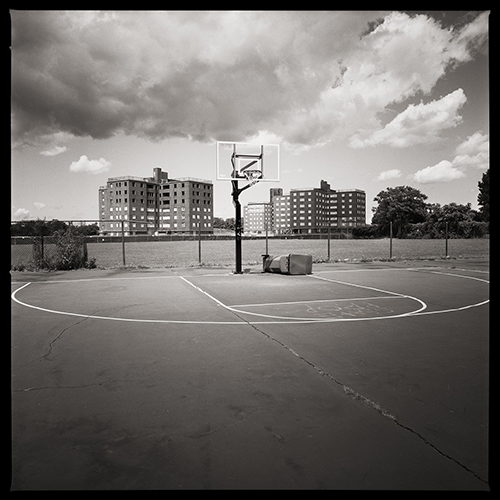
I truly believe that my projects have found me due to my life influences and that I never plan on what is next. It puts a smile on my face when I think about the influences for each of my projects. I can truly say that each fork in the road has led me to be where I am today and I truly appreciate each moment that lead up to where I am. The bad influences are what have helped me to create certain bodies of work along with the good life experiences.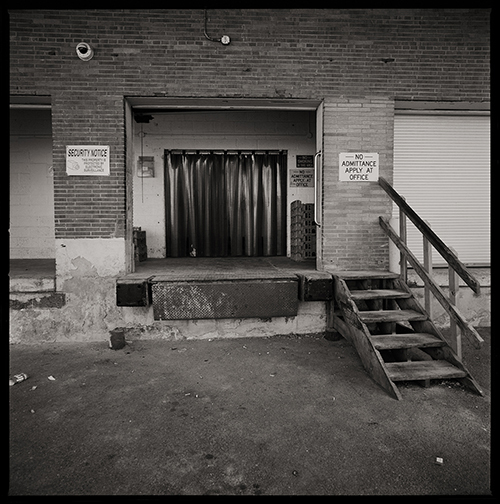
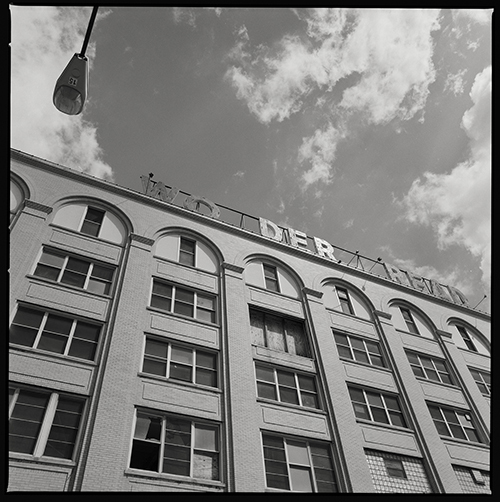
- How would you describe your photography and/or working process?
I only recently realized that lot of my work is centered on societal awareness that is often due to my reaction to a situation in my life. Essentially, I am documenting my life and how I have witnessed technology and societal influences become the reasons we are falling apart as a society, which is forcing classifications of everything. Each stage of my life has led to a body of work, which has then allowed me to have a greater awareness to the people I associate with and my surroundings. In return each body of work has shaped me as the person I am today and the person I hope to help my children into becoming. Therefore, I believe this is why a few curators have labeled me as a “reactionary romantic photographer”. I have actually learned to appreciate this label as one curator explained to me that they could clearly see my emotional presence in the images I create.
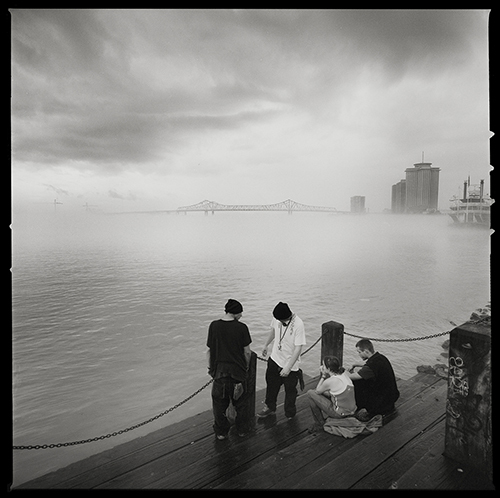
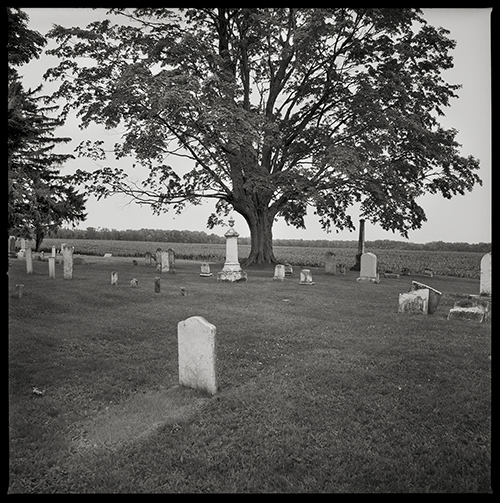
My working process is a blending of the right and left brain, as I am an artist at heart that embraces the geeky technical aspects of photography to enable me to control my intended vision. I have never stopped working with film because I truly believe it slows down my mind and forces me to look closer at what I am photographing. I also love the latency of not having an image until after I process my film, which may be a few weeks or months later. This latency time period allows for me to reflect on what I intended the final image to be and then I can see later if I captured what I envisioned. After the film is processed my workflow is completely digital and has been since 1999 when I would print utilizing Iris printers. The digital workflow process allows me to have the control that I witnessed Lou Draper, my largest mentor, have in the darkroom for creating the final part of his vision. - Please tell us about your most recent photographic work.
My most recent body of work is “Felicific Calculus: Technology as a Social Marker of Class, Race, & Economics in Rochester, NY”.
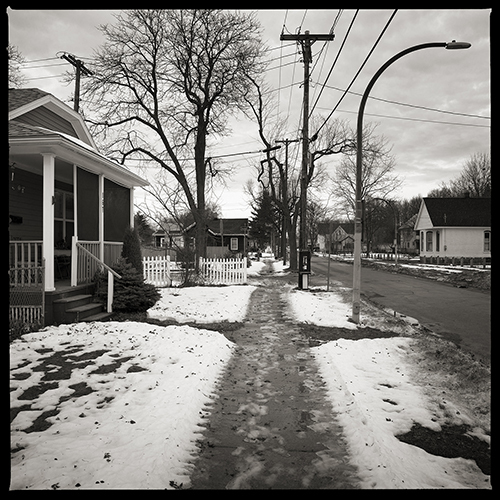

The felicific calculus is an algorithm formulated by jurist and reformer Jeremy Bentham (1748–1832) for calculating the moral rightness of an action by balancing the probable pleasures and pains that it would produce. Bentham, a utilitarian philosopher, believed this calculus could, in principle, help determine the moral status of any considered act. In 2017, I relocated my studio to a different part of Rochester, NY. Colleagues immediately started making comments along the lines of: “...that area's a war zone.” My experience with the new neighborhood was positive, so I wanted to discover what visual cues others might be seeing as indicators of a dangerous environment. Several people had mentioned the number of payphones in the area, inferring that only criminals use payphones these days.
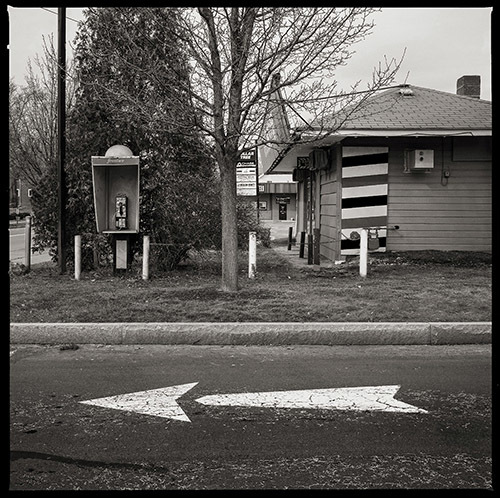
There really were a lot of payphones in my neighborhood. I began documenting them, and quickly saw that far from being used by criminals, these phones served as a lifeline for some of the poorest residents in the area. Looking deeper, I found the story behind Rochester's payphones reflected an unusually altruistic 'felicific calculus' by Frontier Communications. Instead of focusing on profits, they had decided to maintain the payphones in poorer neighborhoods for the good of the community. Many policymakers have opted to view payphones as a social indicator of crime, unfortunately leading to ignorant or even dangerous decisions.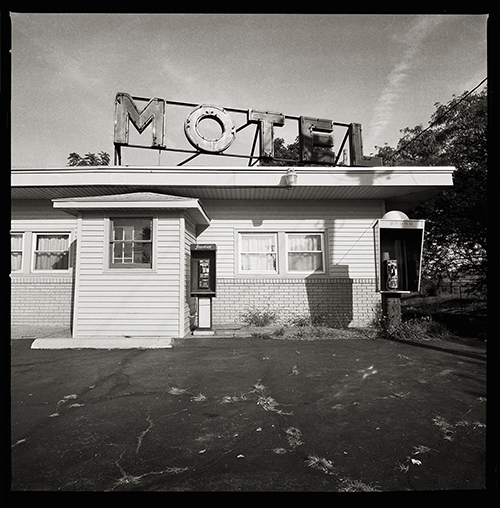
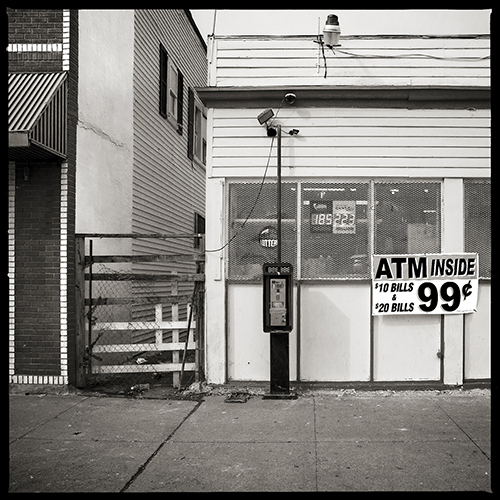
In Detroit, Michigan, politicians had all public payphones removed without studying or surveying their actual use. They simply assumed the criminal connection. This decision was based on a further assumption that everyone today must own a mobile phone. Decision-makers lacking facts or any real understanding of issues facing citizens from a different economic class just acted on a misperception. Witnessing that type of reflexive judgement from my colleagues drove me to educate myself. I photographed payphones and mapped their locations, then overlaid them with census maps showing economic status, ethnicity, age and sex, and the city crime map. There was an immediate, direct correlation between the poverty level and location of the payphones. Areas with the most payphones coincided with Rochester neighborhoods where the average family incomes are lower than $20,000 annually. There was also no correlation with high crime neighborhoods. Through "Felicific Calculus" I hope to challenge negative perceptions of social markers that conflate poverty with crime. Though they are relics to most of us, payphones remain important for residents trapped in lower economic circumstances.
